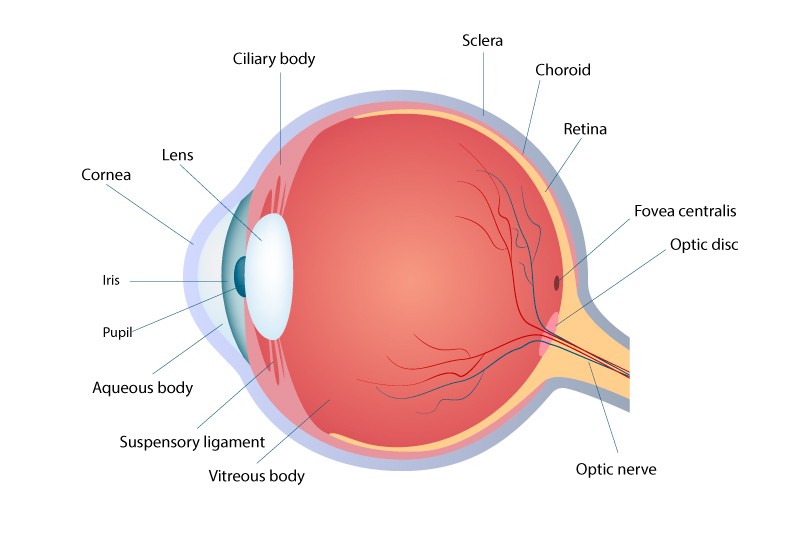Eye Conditions & Eye Anatomy
The eye is the sense organ of the visual system, which also includes the tissues around the eyeball, the optic nerve and the brain.
The eye is a globe that is approximately 25mm in diameter.
It works like a camera. Light is focussed by the cornea and the lens onto the retina. The retina is like the film in a camera, converting the light image into an electrical signal that is transmitted, via the optic nerve, to the brain for final processing.
The vitreous is a clear gel that fills the central part of the eyeball. It is in contact with the retina.
During development, the vitreous carries blood vessels that supply the anterior parts of the eye. Once these structures have their own blood supply, the vessels in the vitreous disappear and it becomes clear. Retention of clarity is a primary function of the vitreous after birth, and it has no role in the maintenance of retinal attachment or eye pressure or shape. It undergoes degenerative changes with age, and eventually separates from the retina (‘posterior vitreous detachment’).
The retina is a complex outgrowth of the brain that senses light. It lines the inside of the eyeball. The retina lies on the retinal pigment epithelium, a supportive layer of cells that, in turn, rests on the choroidal vascular layer. The inner surface of the retina is in contact with the vitreous.
The retina derives nutrition from both the retinal blood vessels, and from the choroid. The retinal blood vessels nourish the inner layers of the retina, while the choroid primarily supplies nutrients (via the retinal pigment epithelium) to the photoreceptor layer.
The central area of the retina is the macula. At the centre of the macula, the fovea lies on the ‘visual axis’ of the eye. These two parts of the retina are responsible for central vision – colour vision of high acuity – and are the parts of the retina used when reading, watching TV, driving and when looking at faces. It is normal for the retina to be thinned at the very centre of the macula, this lets light pass unimpeded to the photoreceptors and is important to allow the best possible visual acuity.
To view more information about eye conditions, select a condition from the “Eye conditions” menu.

